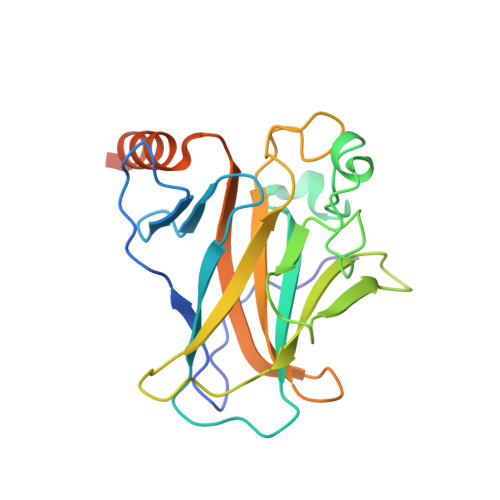Exploiting Transient Protein States for the Design of Small-Molecule Stabilizers of Mutant P53.
Joerger, A.C., Bauer, M.R., Wilcken, R., Baud, M.G.J., Harbrecht, H., Exner, T.E., Boeckler, F.M., Spencer, J., Fersht, A.R.(2015) Structure 23: 2246
- PubMed: 26636255
- DOI: https://doi.org/10.1016/j.str.2015.10.016
- Primary Citation of Related Structures:
5AB9, 5ABA, 5AOI, 5AOJ, 5AOK, 5AOL, 5AOM - PubMed Abstract:
The destabilizing p53 cancer mutation Y220C creates an extended crevice on the surface of the protein that can be targeted by small-molecule stabilizers. Here, we identify different classes of small molecules that bind to this crevice and determine their binding modes by X-ray crystallography. These structures reveal two major conformational states of the pocket and a cryptic, transiently open hydrophobic subpocket that is modulated by Cys220. In one instance, specifically targeting this transient protein state by a pyrrole moiety resulted in a 40-fold increase in binding affinity. Molecular dynamics simulations showed that both open and closed states of this subsite were populated at comparable frequencies along the trajectories. Our data extend the framework for the design of high-affinity Y220C mutant binders for use in personalized anticancer therapy and, more generally, highlight the importance of implementing protein dynamics and hydration patterns in the drug-discovery process.
- MRC Laboratory of Molecular Biology, Francis Crick Avenue, Cambridge CB2 0QH, UK. Electronic address: andreas.joerger@gmx.de.
Organizational Affiliation:



















